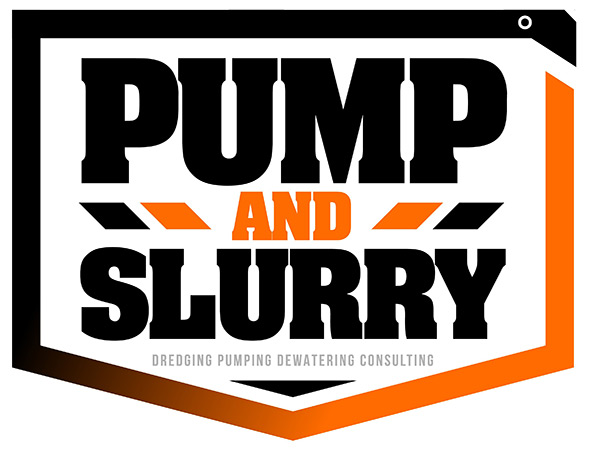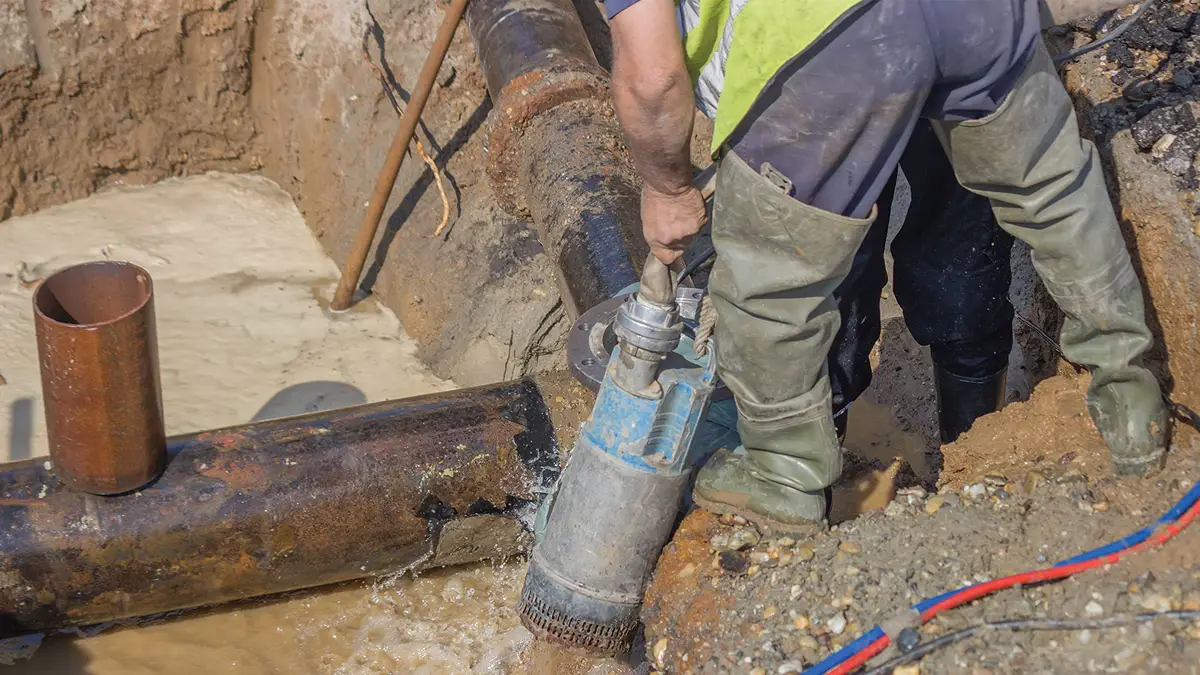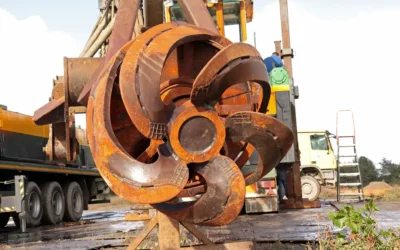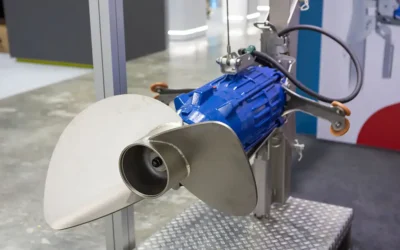Introduction
With growing concerns over climate change, water scarcity, and environmental degradation, industries worldwide are under pressure to adopt more sustainable practices. At the core of many eco-conscious water management strategies lies an often-overlooked yet highly effective technology: industrial submersible water pumps.
These pumps offer a robust and eco-friendly solution to managing water efficiently across sectors like agriculture, wastewater treatment, and construction. Unlike traditional systems, industrial submersible water pumps are designed to operate while completely submerged, providing better performance with less energy and lower environmental impact. Industries around the world are turning to industrial submersible water pumps to meet both operational and environmental standards.
In this blog, we will explore how industrial submersible water pumps contribute to sustainable water use, the environmental benefits they offer, and how industries can leverage them for long-term ecological and economic gains.
What Are Industrial Submersible Water Pumps?
Industrial submersible water pumps are a category of pumps specifically engineered for continuous operation beneath water surfaces. The motor and pump are integrated into a single, sealed unit to prevent water from penetrating internal components. This unique design allows them to function in a wide range of submerged conditions.
Key Features of Industrial Submersible Water Pumps
Industrial submersible water pumps are engineered with features that make them ideal for demanding, high-volume applications across various industries. Their sealed design prevents water from entering the motor or internal components, allowing the pump to operate fully submerged without risk of electrical shorting or mechanical failure. This watertight construction not only ensures durability but also minimizes the risk of corrosion and contamination.
One of the most notable advantages of these pumps is their silent and efficient operation. Because the motor is submerged and the pump runs underwater, noise levels are significantly reduced compared to surface-mounted alternatives. Additionally, industrial submersible water pumps are built to handle more than just clean water. Many models are specifically designed to manage solids, sludge, slurry, and even chemically aggressive fluids, thanks to abrasion-resistant materials and clog-resistant impellers. This versatility allows them to operate reliably in extreme conditions without frequent maintenance or clogging issues.
Their ability to perform under harsh environmental conditions makes industrial submersible water pumps indispensable in modern infrastructure, supporting both operational efficiency and environmental sustainability across sectors.
By utilizing industrial submersible water pumps, industries can maintain productivity while minimizing their environmental footprint.

Energy Efficiency: Reducing Emissions Through Smarter Pumping
Energy efficiency lies at the heart of sustainable industrial practices, and industrial submersible water pumps are setting new standards in this area. Unlike traditional surface pumps that rely on suction, submersible pumps operate by pushing water to the surface. This simple yet critical difference drastically reduces energy loss associated with suction head pressure, priming inefficiencies, and friction within the piping system.
The design of industrial submersible water pumps ensures that the pump is always fully submerged in the fluid it’s moving. As a result, gravitational force and hydrostatic pressure assist the pumping action, allowing the motor to operate more efficiently with less resistance. This optimized energy transfer directly translates into lower power consumption, which significantly reduces greenhouse gas emissions, particularly when these pumps replace older, fossil fuel-powered alternatives. For organizations focused on long-term sustainability, investing in industrial submersible water pumps offers clear environmental advantages.
Environmental Benefits of Energy-Efficient Pumping:
- Lower Carbon Emissions: By using less electricity to move the same volume of water, industrial submersible pump helps decrease the overall carbon footprint of industrial operations. This is especially impactful in regions where electricity is generated from coal or other fossil fuels.
- Reduced Fossil Fuel Dependency: Many outdated water movement systems rely on diesel-powered generators or fuel-driven pumps. Replacing them with electric-powered industrial submersible water pumps not only enhances efficiency but also reduces toxic emissions such as carbon monoxide, nitrogen oxides, and particulates.
- Enhanced Motor Efficiency: The enclosed, water-cooled design of the submersible motor ensures optimal heat dissipation. This leads to longer motor life and less energy waste during operation, further supporting sustainable energy practices.
For large-scale industries such as mining, agriculture, and municipal water treatment, transitioning to energy-efficient industrial submersible water pumps can lead to significant cost savings, often amounting to thousands of kilowatt-hours per year. This translates not just into reduced utility bills but also fewer emissions and greater alignment with global climate goals.
Industrial submersible water pumps offer the dual advantage of environmental stewardship and financial efficiency, making them an essential component of any forward-thinking, sustainable water management strategy.
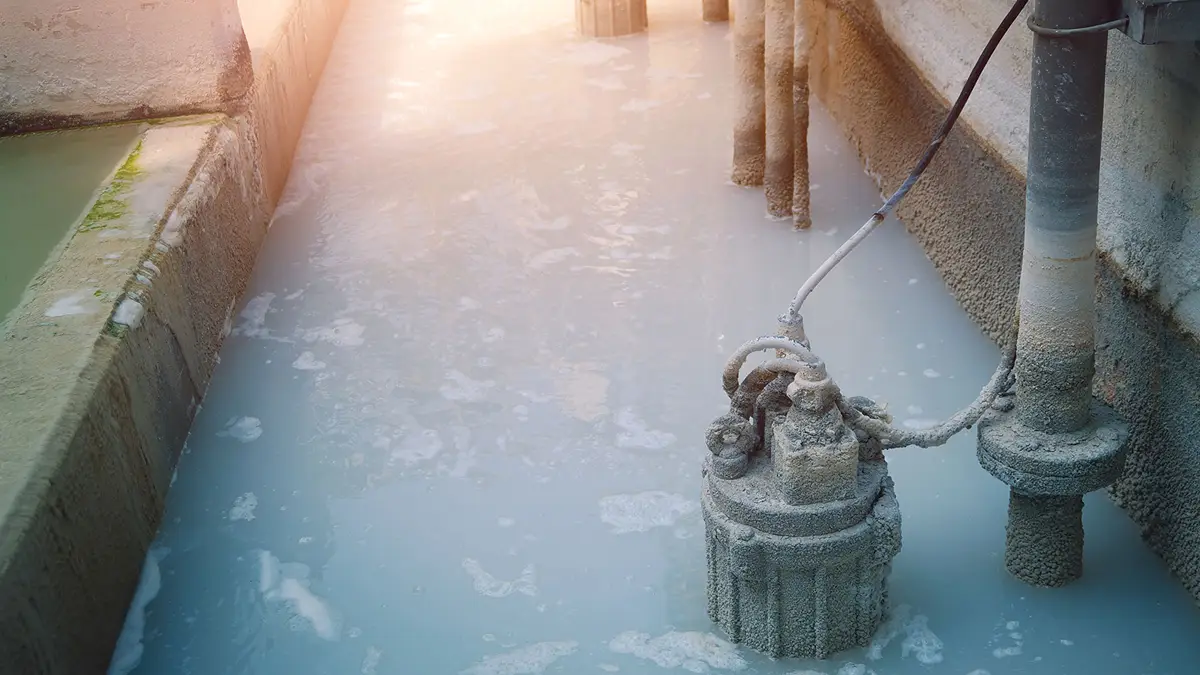
Water Conservation: Minimizing Waste and Promoting Efficiency
Water conservation is critical in a world where billions of people face water shortages. Industrial submersible water pumps offer precise flow control, which helps eliminate the waste associated with overpumping or leakage. Unlike conventional systems, industrial submersible water pumps are built to perform efficiently even under extreme submersion.
For example, in irrigation systems, these pumps allow water to be delivered directly to the root zone, thereby reducing the amount lost to evaporation or runoff. This is particularly valuable in arid regions where every drop counts. By design, industrial submersible water pumps eliminate the risk of air locking and priming issues.
By integrating industrial submersible water pumps with smart irrigation systems, farmers and land managers can significantly improve their water efficiency and crop yields, all while reducing ecological strain.

Wastewater Treatment: Cleaner Solutions for a Healthier Planet
Modern wastewater treatment plants are essential to public health and environmental preservation. These facilities require robust pumping solutions to transport, treat, and discharge wastewater safely. Industrial submersible water pumps are ideal for this purpose. Industrial submersible water pumps help streamline water transfer processes, especially in off-grid or remote environments.
Environmental Contributions:
- Efficient handling of sludge, sewage, and greywater
- Resistance to chemical and microbial corrosion
- Support for water recycling and reuse initiatives
Unlike conventional pumps, industrial submersible pump is submerged within the fluid they move, which allows for smoother operation with fewer breakdowns. Their ability to handle solid-laden fluids makes them indispensable in sewage systems where failure could result in hazardous leaks and contamination.
Municipal systems across the globe are increasingly investing in submersible water pump industrial systems to meet rising demand while complying with environmental standards.
Construction and Mining: Cleaner and Safer Sites
Construction and mining operations are among the most water-intensive industries. Whether it’s dewatering excavation sites or removing water from mine shafts, effective water management is critical.
Traditional diesel-powered pumps are noisy, polluting, and expensive to operate. On the other hand, industrial submersible water pumps offer a cleaner, quieter, and more efficient solution.
Why They’re Better:
- No surface noise or air pollution
- Lower fuel and maintenance costs
- Safer for operators and the surrounding ecosystems
By eliminating the need for diesel engines and minimizing exhaust fumes, industrial submersible pump systems help construction companies comply with emissions regulations while maintaining safe and efficient sites.
Longevity and Low Maintenance: Reducing Waste Over Time
One of the strongest environmental arguments for using industrial submersible water pumps lies in their durability. Built to last, these pumps can run for years under extreme conditions with minimal wear and tear. Their corrosion-resistant materials and sealed construction prevent internal damage caused by moisture, sludge, and other contaminants. Thanks to advanced engineering, industrial submersible water pumps can handle various fluids, from wastewater to chemical mixtures.
How This Supports Sustainability:
- Fewer breakdowns mean less production and disposal of spare parts
- Reduced frequency of replacements lowers industrial waste.
- Lower lifecycle emissions compared to traditional surface pumps.
In essence, a high-quality industrial submersible pump not only performs better but also contributes to reducing long-term environmental impact by minimizing the carbon footprint associated with manufacturing, shipping, and servicing equipment.
Moreover, the ability of these pumps to operate continuously with little supervision frees up resources and labor, helping industries achieve more with less.
Integration With Smart Water Management Systems
The future of water sustainability lies in intelligent systems. The integration of industrial submersible water pumps with smart technologies, like IoT sensors, SCADA systems, and AI-based controllers, unlocks an entirely new level of efficiency. When integrated into green infrastructure projects, industrial submersible water pumps contribute significantly to reduced energy demands.
Smart Features Include:
- Real-time monitoring of flow rate, temperature, and pressure
- Predictive maintenance alerts to prevent downtime
- Automated adjustments to reduce energy and water use
For example, in a smart agriculture setup, sensors can detect soil moisture levels and activate industrial submersible water pumps only when necessary. This avoids overwatering and reduces groundwater depletion.
In advanced facilities, industrial submersible water pumps are integrated with artificial intelligence to predict wear-and-tear and automatically switch operation modes based on real-time usage patterns.
Additionally, smart technology enables centralized monitoring across multiple sites. A utility company, for example, can monitor a city’s entire water infrastructure from a single dashboard, analyzing the performance of each industrial submersible pump in real-time. This level of oversight minimizes water loss, energy waste, and emergency shutdowns—all of which contribute to a more sustainable operation.
When powered by renewable energy, smart systems using submersible water pump industrial units can operate with zero net emissions, creating a truly green solution for water management.
Challenges and How to Overcome Them
Although the benefits of industrial submersible water pumps are extensive, there are a few operational challenges to be aware of:
A. Installation Complexity
Deep-well installations or setups in contaminated water sources require skilled handling. Choosing an experienced installer and a high-quality pump ensures smooth deployment.
B. Maintenance Accessibility
Because they operate underwater, maintenance can be more challenging than with surface pumps. However, preventive maintenance schedules and modern diagnostics help mitigate this.
C. Power Dependency
These pumps rely heavily on a consistent power source. In off-grid areas, combining industrial submersible water pumps with solar panels is an eco-friendly and energy-efficient solution.
By planning and leveraging technology, businesses can easily overcome these barriers and enjoy the long-term environmental benefits of these pumps.
Selecting the Right Industrial Submersible Water Pump
Choosing the right pump involves a strategic assessment of the specific use case. Here are the primary factors to evaluate:
A. Flow Rate and Head
Ensure the pump can deliver the necessary volume at the required height.
B. Liquid Composition
Wastewater, slurry, or corrosive chemicals may require specialized materials like stainless steel or coated impellers.
C. Energy Efficiency
Look for motors that meet or exceed efficiency ratings such as IE3 or IE4.
D. Automation Compatibility
Opt for models that support remote monitoring, digital sensors, and smart control panels.
Partnering with a reputable submersible water pump industrial supplier ensures proper sizing, installation, and maintenance support, further enhancing the environmental benefits.
The Role of Industrial Submersible Water Pumps in Global Sustainability
The global focus on water sustainability will only grow stronger in the coming years. As climate patterns shift and water resources become more strained, industries must rise to the challenge with smarter, greener technologies.
Industrial submersible water pumps represent a cornerstone of this transition. Their efficiency, versatility, and eco-friendly design make them the preferred choice for sustainable water solutions.
By integrating them into industrial ecosystems—whether in farms, factories, treatment plants, or mines—businesses can achieve their goals while protecting the planet.
Environmental Impact of Pump Material and Design
Beyond energy efficiency, the design and materials used in industrial submersible water pumps also contribute to sustainability. These pumps are often constructed with stainless steel, bronze, or corrosion-resistant polymers. Such materials extend the lifespan of the pump and reduce the frequency of replacements, ultimately resulting in less industrial waste. Many large-scale operations now rely exclusively on industrial submersible water pumps for consistent water handling.
Modern designs also promote eco-friendliness:
- Hydrodynamic impellers reduce energy consumption
- Non-toxic seals and lubricants prevent contamination of natural water bodies.
- Recyclable casings and parts reduce landfill waste at the end of lif.e
Choosing an industrial submersible pump built with these environmentally friendly principles in mind helps companies minimize their carbon and material footprint.
Conclusion
Incorporating industrial submersible water pumps into water infrastructure isn’t just a technical upgrade—it’s a commitment to a more responsible, sustainable future.
From saving energy and water to reducing waste and emissions, these pumps align with the needs of a changing world. Their adaptability across sectors, compatibility with renewable energy, and support for smart water systems make them a powerful tool for environmental progress.
As industries and governments work together to meet ambitious sustainability targets, adopting industrial submersible water pumps will be a key step forward.
Adopting industrial submersible water pumps is not just about optimizing industrial efficiency—it’s also about aligning your operations with global environmental goals. From meeting ESG (Environmental, Social, and Governance) standards to qualifying for carbon credits, the use of these pumps opens up new opportunities for green growth.
Businesses that transition now will not only enjoy lower operational costs but will also position themselves as environmental leaders in their industries. With increasing regulatory pressures and consumer demand for sustainable practices, integrating industrial submersible water pumps is both a responsible and strategic choice.




